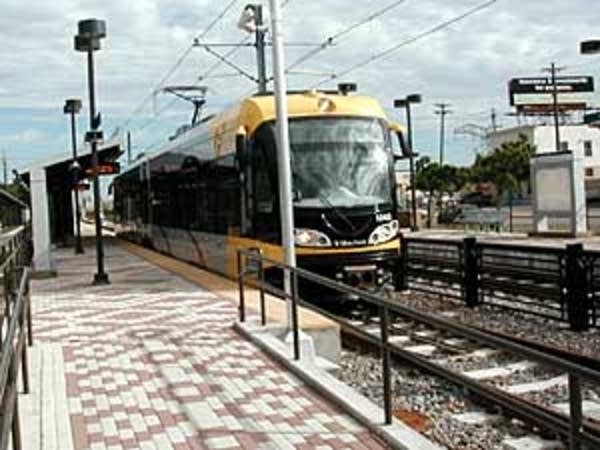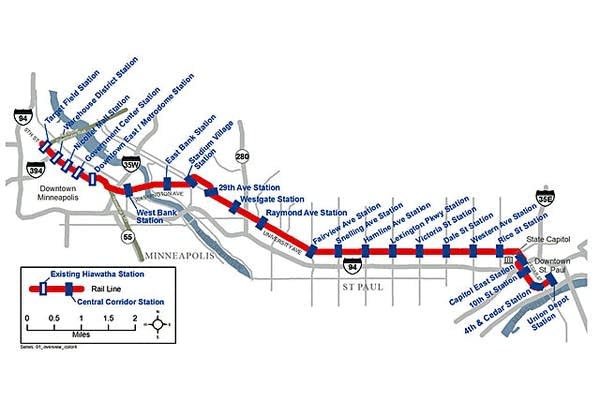Pawlenty cites Univ. concerns in vetoing Central Corridor
Go Deeper.
Create an account or log in to save stories.
Like this?
Thanks for liking this story! We have added it to a list of your favorite stories.

Objections from university officials influenced Pawlenty's decision to axe $70 million for the Central Corridor project from the bonding bill earlier this month. The line would link Minneapolis and St. Paul.
Light rail planners want to steer the train along the busy Washington Avenue and re-direct cars onto other streets. But university officials are still pushing for a route further north and closer to Dinkytown.
The governor said he and University President Robert Bruininks have had a number of conversations about the project.
"He never indicated to me it should be in or out of the bonding bill, but he has continued to express concerns about how the project might impact the University of Minnesota. And he continues to express concerns about the current alignment," Pawlenty said. "He wants the alignment change and also wants a lot of money in mitigation damage if the project goes forward."
Turn Up Your Support
MPR News helps you turn down the noise and build shared understanding. Turn up your support for this public resource and keep trusted journalism accessible to all.

The Metropolitan Council wants to turn a portion of Washington Avenue into a so-called transit mall. University officials estimate it would cost up to $100 million to re-route traffic to other streets. They expect to lose another $100 million in lost hospital and clinic revenue.
The university's chief attorney raised concerns at the federal level, too, sending a letter to the Federal Transit Administration last month. Minnesota Public Radio News obtained a copy of the 23 page letter, which outlines a number of procedural concerns about the project.
While the governor's veto shocked many project supporters, it does gives the university more time to resolve its concerns.
But Kathleen O'Brien, who oversees the university's operations, said the university remains a staunch supporter of the project, and wanted to see the Central Corridor funding included in the bonding bill.
At the same time, O'Brien said the university wants to see the project done right. The university's preferred route, referred to as the "northern alignment," would take the train beside the future site of a medical biosciences corridor.
O'Brien also thinks this route would save riders time, because it wouldn't go through as many traffic lights.
"We believe the northern alignment will serve the university, connect the university to the community, provide opportunity for development and save money and be a quicker ride time," O'Brien said.
Gov. Pawlenty said the U of M's objections were part of "a bucket of unanswered questions" regarding the light-rail project. He said he's also concerned about the project's effect on small business owners along University Avenue.
The sponsor of the bonding bill, DFL State Representative Alice Hausman, said she plans to draft a new bill this week to restore the Central Corridor money.
Pawlenty has said he's open to a second bonding bill. He just wants some of his projects included as well.
Dear reader,
Your voice matters. And we want to hear it.
Will you help shape the future of Minnesota Public Radio by taking our short Listener Survey?
It only takes a few minutes, and your input helps us serve you better—whether it’s news, culture, or the conversations that matter most to Minnesotans.




